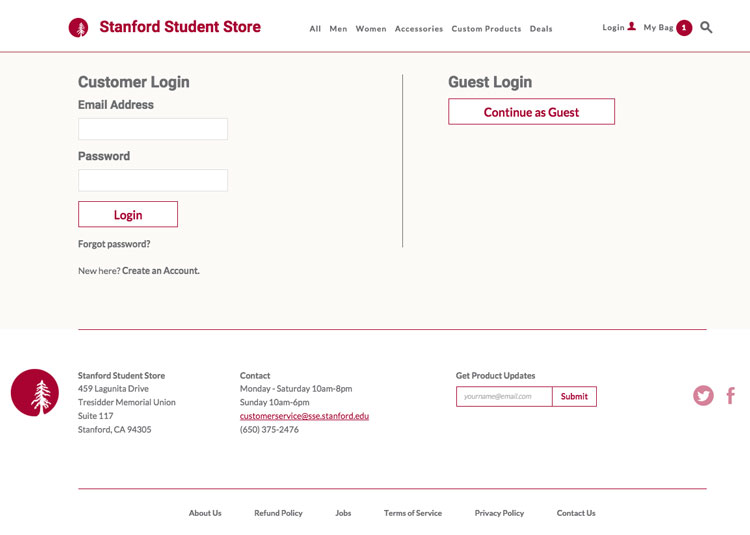Ecommerce Website Consideration: Design for Drunks
When was the last time you saw a drunk shopper at the mall? It’s not common to see tipsy people with shopping bags in hand, but the privacy of online shopping allows for this indulgence.
“I would stand in front of tents in the store and eventually think ‘No way. Camping? With two kids, one of whom never sleeps?’” explained Kelly Doherty, a blogger and entrepreneur based in North Carolina.
“I threw back some beer one night and suddenly camping was the BEST IDEA EVER. I went online and bought a huge tent and two very nice blow up mattresses.”
Though Doherty surprised her husband with the purchase, she adds that she got a killer deal.
“Even a cheap beer buzz doesn’t kill my online shopping mojo,” Doherty said.
 She’s among a growing demographic of late night shoppers. According to research by Google, one third of all shopping searches happen between the hours of 10 p.m. and 4 a.m. And not all of these shoppers are in their right minds.
She’s among a growing demographic of late night shoppers. According to research by Google, one third of all shopping searches happen between the hours of 10 p.m. and 4 a.m. And not all of these shoppers are in their right minds.
As popular shopping times match up with common drinking times, it’s important for ecommerce websites to plan for both slightly tipsy and considerably smashed consumers. Noting the boost in traffic at nighttime, some retailers are already taking advantage of the freewheeling spending that comes with the combination of a few glasses of wine and a computer. For example, Neiman Marcus and Saks offer enticing online deals after dinner and sometimes as late as 2am.
With mobile use increasing and ecommerce websites improving small screen shopping, we can expect more purchases to happen at all hours of the day and night.
It’s a smart strategy to figure out when your traffic is highest and encourage shoppers at that time to buy or at least take a step forward in the purchasing process. However, what’s more important than clever marketing is ensuring a terrific user experience for all users, drunk or sober. Marketing efforts are often eroded by poor UX.
An important part of your job is to make sure that anyone can happily and easily spend money on your website.
The key to great UX – which impacts new and repeat customers – is empathy. Despite never seeing their customers face-to-face, ecommerce retailers need to find empathy for their website users. This is required because the barriers to leaving a website are miniscule. We can buy elsewhere with a click away. Ignoring problems on your website, even small irritations, can cause users to leave it. In the current state of ecommerce, superior UX is a competitive advantage that retailers can jump on before it disappears.
Fixing website issues and planning for users’ needs helps everyone. Not only will bumbling customers with beer goggles benefit but your other website visitors will also.
“People think that if your website works for the majority of people, it’s good enough, but no, it’s not,” explained Robin Smail, a user experience designer based in Pennsylvania. “If you design for the outliers, you cover the entire range. Everybody’s needs get met – drunk people, old people, exhausted people and others can use your website successfully.”
Planning solely for highly capable website users harms your business. A better strategy is to cater to those who aren’t at their best. Following are five suggestions to help your drunk shoppers – and every one else:
Make things obvious – With motor abilities and cognitive functions slowed down, tipsy people can easily miss important items on your website. Mentally, they might have trouble focusing on what they are doing or remembering where they are on the website. Makings sure it’s clear what page users are on with clear navigation and/or breadcrumbs can help. Physically, they may be challenged to click on buttons and other targets. Help these users by making sure buttons are obvious and in strong contrast to backgrounds. Target areas for form fills, calls to actions and links need to be large so they don’t require very good fine motor skills.
Speed up your website – Drunk people are impatient and get annoyed easily if they can’t get what they want quickly – but they aren’t the only ones. In usability tests (which are not typically conducted with intoxicated individuals,) participants often comment on speed or sluggishness of a website even if the researcher doesn’t ask about it. Our developers suggest you take a lean approach and don’t overload your website with too many modules or plug-ins that will slow it down. Also be sure to optimize your images to reduce their file size so that they load quickly. Read more suggestions for a speedy site.

Remove other irritations – In addition to speed, consider other irritations that will bother those users with little patience or goodwill. Definitely do not play videos automatically as research shows this really annoys people and increases cognitive load. Pop ups should also be used very selectively – if at all. And don’t force users to register. Give them a choice to check out as a guest if that’s what they prefer.

Respond to actions taken – People, drunk and sober, like to know that actions they take have results. Give customers some satisfaction when they click, purchase or take other actions you want to reinforce. Shoppers do not want to wonder whether an item they have chosen actually landed in a cart or bag. The Dara Artisans website has a sidebar pop out with your cart when you add an item to it, so you know that beautiful scarf from India made it in.

Plan for bad decisions – After drinking, inhibitions are lowered and judgment is poor. It’s easy to buy the wrong size, color or item. Many acquaintances told me that they have shopped online while drunk and were completely surprised by the items that ended at their doorstep – sometimes happily but other times not. Start by making sure item descriptions are clear and thorough. But do plan for returns and have your policy spelled out on your website. Do not expect everyone to read the fine print, so ensure your shipping and return policies are easily findable and understandable from a quick scan.
If you plan for drunk shoppers, those who are stone cold sober will have a better experience too. What could you do today to improve the UX on your website for all?
